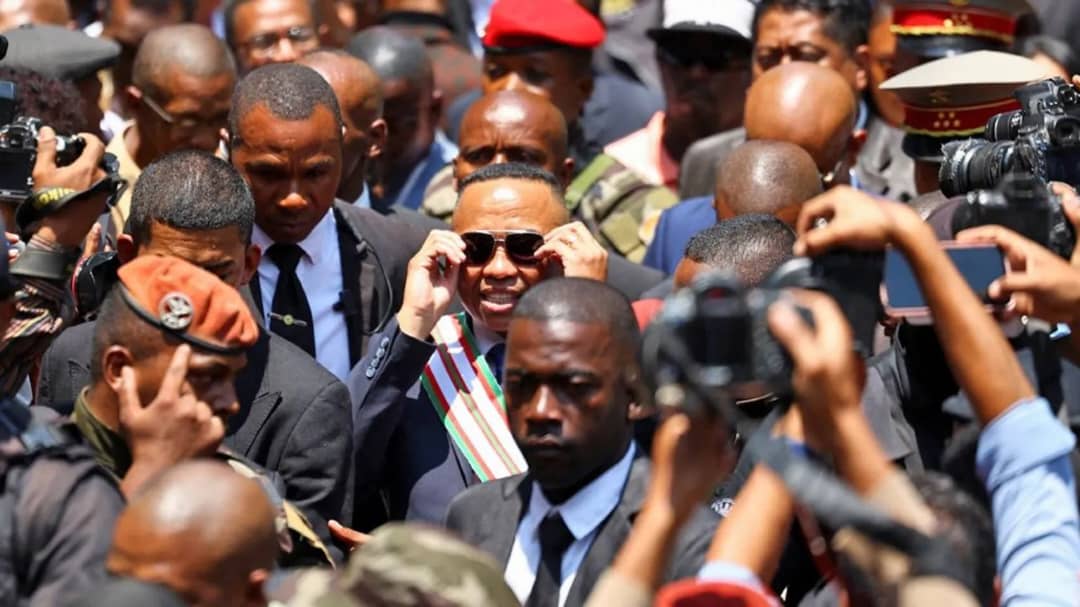South Africa’s Elusive ‘Tiger’ – The Fugitive at the Center of a Deadly Illegal Mining Empire
- by Muna, South Africa, RNG247
- about 5 months ago
- 94 views

In the rugged mountains of Lesotho, the name 'Tiger' remains shrouded in mystery and fear. The 42-year-old man, whose birth name is James Neo Tshoaeli, has been on the run for over four months after reportedly fleeing from a South African police detention. His elusive whereabouts have become a symbol of the complexities surrounding illegal mining syndicates, socio-economic struggles, and the brutal realities faced by those entangled in underground gold rushes.
Tiger’s story began in his small hometown near Mokhotlong, a remote town perched high in the terrain’s rugged folds. Known locally as a peaceful and friendly individual, his family recollects him as a boy with dreams of justice—initially aiming to become a police officer, a goal he abandoned after tragedy struck their family. Following his father’s death when he was 21, Tiger took on the mantle of family provider, venturing into South Africa’s shadowy illegal mining industry, or zama, a risky endeavor that offered both opportunity and peril.
The last time Tiger's family saw him was in 2017, shortly before his separation from his wife. Since then, their communication faded until a harrowing social media post revealed news of his alleged involvement in a clandestine operation at an abandoned gold mine near Stilfontein—an operation that would turn deadly at the turn of the year. That same operation was overshadowed by a tragic disaster in January when 78 bodies were discovered underground, many dying from apparent starvation and dehydration amid a government crackdown.
South African police allege Tiger was a key figure—possibly a ring leader—controlling illegal operations at the abandoned mine. Although officially detained, he vanished from custody in an audacious escape, reportedly aided by accomplices, with four policemen now charged and awaiting trial. The authorities have yet to determine his current location, fueling fears and rumors about his fate.
Doubts shadow the police narrative. A trusted friend, Ayanda, claims Tiger was more of a mid-level manager—a supervisor underground—rather than the ringleader, dismissing the notion of him being a top boss in the syndicate. Expert mining researcher Makhotla Sefuli explains the hierarchical nature of illegal mining gangs, emphasizing that those at the very top rarely dig in the mines personally. Instead, the syndicates operate like pyramids, involving layers of workers, financiers, brokers, and influential elites with close ties to political figures—those who reap massive profits while remaining unseen.
The tragedy at Stilfontein exemplifies the dangers faced by miners like Supang Khoaisanyane, a 39-year-old migrant from Lesotho. In January, his body was recovered among the victims of the underground mine collapse. His family in Bobete, a village nestled amidst the lush, untouched hills of Thaba-Tseka, recalls him as a hard-working man struggling to support his loved ones. His unfinished house—lacking a roof and windows—stands as a silent testament to his dreams of providing for his family.
Supang’s journey was driven by crushing poverty—unemployment in Lesotho stands at nearly 50% among youth, and opportunities are scarce. Eager to earn a livelihood, he traveled to South Africa in hopes of supporting his wife and children. Though his family was unaware of his underground work until his untimely passing, they acknowledge the desperation that pushed him into the illegal gold mines.
The circumstances surrounding the Stilfontein disaster were brutal. Reports suggest authorities deliberately restricted access to food and water—a strategy intended to flush out miners, but which resulted in a catastrophic loss of life. Survivors were severely ill when rescued, many succumbing shortly after. The families mourned their loved ones; Supang was laid to rest near the site of the mine, his unfinished house now a poignant memento of a man striving to break free from impoverishment.
Meanwhile, Tiger's family remains in limbo. His mother, Mampho Tshoaeli, and brother, Thabiso, continue to await news, clinging to hope that he might still be alive or, at the very least, brought to justice. The South African police have promised the search persists, yet the manhunt has yielded little beyond uncertainty.
As the story unfolds, it exposes a deeply rooted socio-economic crisis—one that spurs desperate individuals like Tiger and Supang to risk their lives underground in search of survival. The shadows cast by these underground economies and their powerful controllers continue to threaten lives across borders, leaving families torn and communities grappling with profound loss and unanswered questions.





.jpeg)


.jpeg)







0 Comment(s)